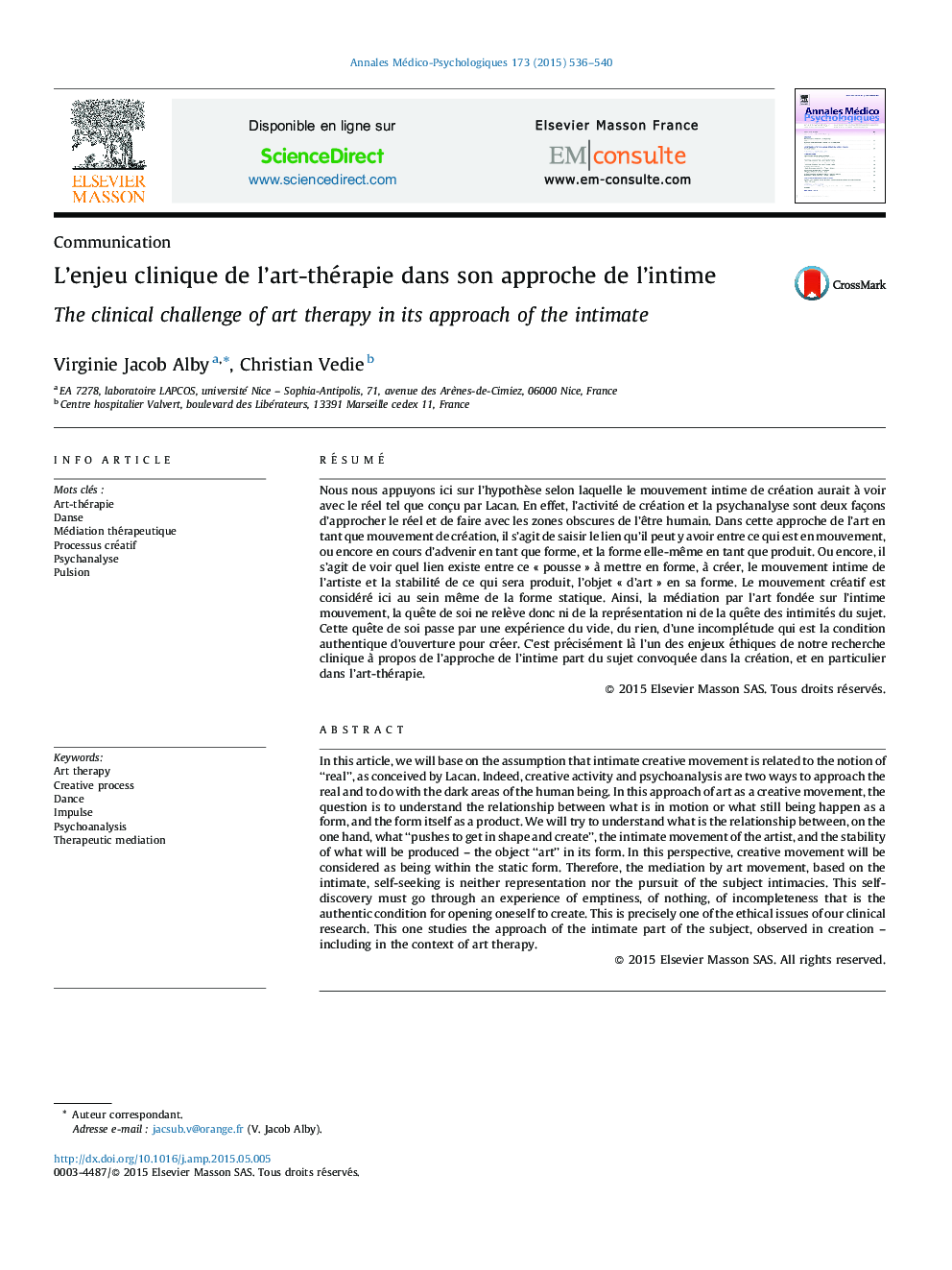| Article ID | Journal | Published Year | Pages | File Type |
|---|---|---|---|---|
| 313756 | Annales Mdico-psychologiques, revue psychiatrique | 2015 | 5 Pages |
RésuméNous nous appuyons ici sur l’hypothèse selon laquelle le mouvement intime de création aurait à voir avec le réel tel que conçu par Lacan. En effet, l’activité de création et la psychanalyse sont deux façons d’approcher le réel et de faire avec les zones obscures de l’être humain. Dans cette approche de l’art en tant que mouvement de création, il s’agit de saisir le lien qu’il peut y avoir entre ce qui est en mouvement, ou encore en cours d’advenir en tant que forme, et la forme elle-même en tant que produit. Ou encore, il s’agit de voir quel lien existe entre ce « pousse » à mettre en forme, à créer, le mouvement intime de l’artiste et la stabilité de ce qui sera produit, l’objet « d’art » en sa forme. Le mouvement créatif est considéré ici au sein même de la forme statique. Ainsi, la médiation par l’art fondée sur l’intime mouvement, la quête de soi ne relève donc ni de la représentation ni de la quête des intimités du sujet. Cette quête de soi passe par une expérience du vide, du rien, d’une incomplétude qui est la condition authentique d’ouverture pour créer. C’est précisément là l’un des enjeux éthiques de notre recherche clinique à propos de l’approche de l’intime part du sujet convoquée dans la création, et en particulier dans l’art-thérapie.
In this article, we will base on the assumption that intimate creative movement is related to the notion of “real”, as conceived by Lacan. Indeed, creative activity and psychoanalysis are two ways to approach the real and to do with the dark areas of the human being. In this approach of art as a creative movement, the question is to understand the relationship between what is in motion or what still being happen as a form, and the form itself as a product. We will try to understand what is the relationship between, on the one hand, what “pushes to get in shape and create”, the intimate movement of the artist, and the stability of what will be produced – the object “art” in its form. In this perspective, creative movement will be considered as being within the static form. Therefore, the mediation by art movement, based on the intimate, self-seeking is neither representation nor the pursuit of the subject intimacies. This self-discovery must go through an experience of emptiness, of nothing, of incompleteness that is the authentic condition for opening oneself to create. This is precisely one of the ethical issues of our clinical research. This one studies the approach of the intimate part of the subject, observed in creation – including in the context of art therapy.
